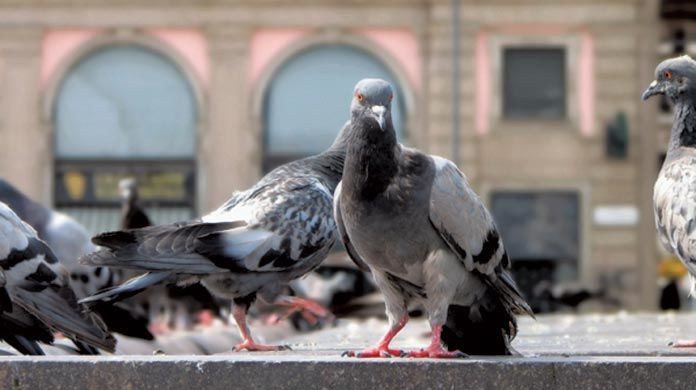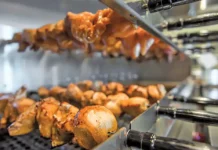
By Hope Bowman, Technical Specialist, Western Pest Services
Technology to help manage bird problems
Birds are beloved by many and are often overlooked when it comes to pest management. But while they may be pleasant in the park, some birds can create health and safety issues when introduced to your restaurant. Whether it’s birds lingering on the patio or nesting under your roof, it’s important to know what dangers birds pose to restaurants and what technology is out there to help manage them.
While there are rare, high-profile diseases such as bird flu that make birds an obvious detriment to the safety of your restaurant, there are some lesser known health dangers associated with pest birds. They carry ectoparasites, such as mites, that can migrate to humans and cause diseases. Bird feathers can also cause respiratory problems and their droppings can expose employees and diners to more than 60 dangerous diseases.
Birds can also be responsible for structural damage. The International Association of Certified Home Inspectors reports that birds cause tens of millions of dollars in damage every year to machinery, automobiles, roofs and ventilation systems. Their droppings contain uric acid that can eat through building materials and damage your restaurant’s exterior. Bird nests can clog gutters and draining systems and even present a fire hazard—nests are usually constructed with flammable materials like twigs and straw.
Bird droppings can be a safety risk and legal liability, too. When fresh, droppings can be slippery and cause diners or employees to slip or fall. Not to mention that dining near excessive bird droppings is not exactly a five-star experience for your customers.
There are many techniques used today to help relieve bird problems; however, bird control can be difficult, particularly with federal, state and local laws protecting bird species and the ethics of their removal—even some of the most common pest birds have federal protection from mistreatment. Therefore, this type of pest management is best left to an experienced professional so it’s executed legally and in the safest manner
possible.
So how do you manage unwanted bird visitors? First, identify the reason why they are there. A pest management professional can examine bird pressure, which is the level of attachment birds have to your establishment. The first level is socializing, when birds are simply using your property as a place to loaf and communicate with one another. The second is feeding, meaning that food and water is readily available at your location and birds are taking advantage of the free meal. Roosting is next, meaning birds are finding shelter, food and water regularly and are beginning to stay overnight. Finally, there’s nesting, when birds are breeding and taking up permanent residence on your property.
As birds form a deeper attachment to your building, it becomes harder to remove them.
Once the reason for their presence has been identified, work with a pest management professional to determine the control methods for your restaurant. There are three categories of bird control techniques that professionals use for bird management:
Repellants
Repellants are designed to make birds uncomfortable at your restaurant and are a common solution when bird pressure is low. There are a few different types of repellants, including a gel that makes birds feel as though their feet are stuck, an electronic repellant that gives birds a slight shock when they land somewhere they’re not supposed to, and bird spikes, which are a common physical repellant that eliminate comfortable perching locations.
Relocation
As birds become increasingly attached to your property, simply making them uncomfortable may not be enough to stop them from roosting and eventually nesting. At this point, relocation may become necessary and trapping tactics such as mist netting and glue boards may be introduced. Mist nets are made out of very fine but strong fibers that birds are unable to see. Nettings and glue boards are typically installed in places where birds are feeding, and they allow professionals to remove the animal from the location without harming it.
Exclusion
Exclusion is needed when the structure of a building creates a suitable environment for birds. It entails blocking off all areas birds frequent so they cannot return. Netting can be used to block off entire areas, sometimes entire buildings if the infestation is severe.
While these strategies may seem cut and dry, there is no silver bullet for eliminating a bird problem. An experienced pest management professional can create a tailored program based on the bird species, location and restaurant architecture that will mostly likely combine a variety of the strategies listed above. With a basic knowledge of bird control and a trusted professional behind you, you can help ensure birds are leaving your business—and diners—alone.
Hope Bowman is a Technical Specialist and Board-Certified Entomologist with Western Pest Services, a New Jersey-based pest management company serving businesses and homeowners in major Northeastern markets. Learn more about Western by visiting www.westernpest.com.























